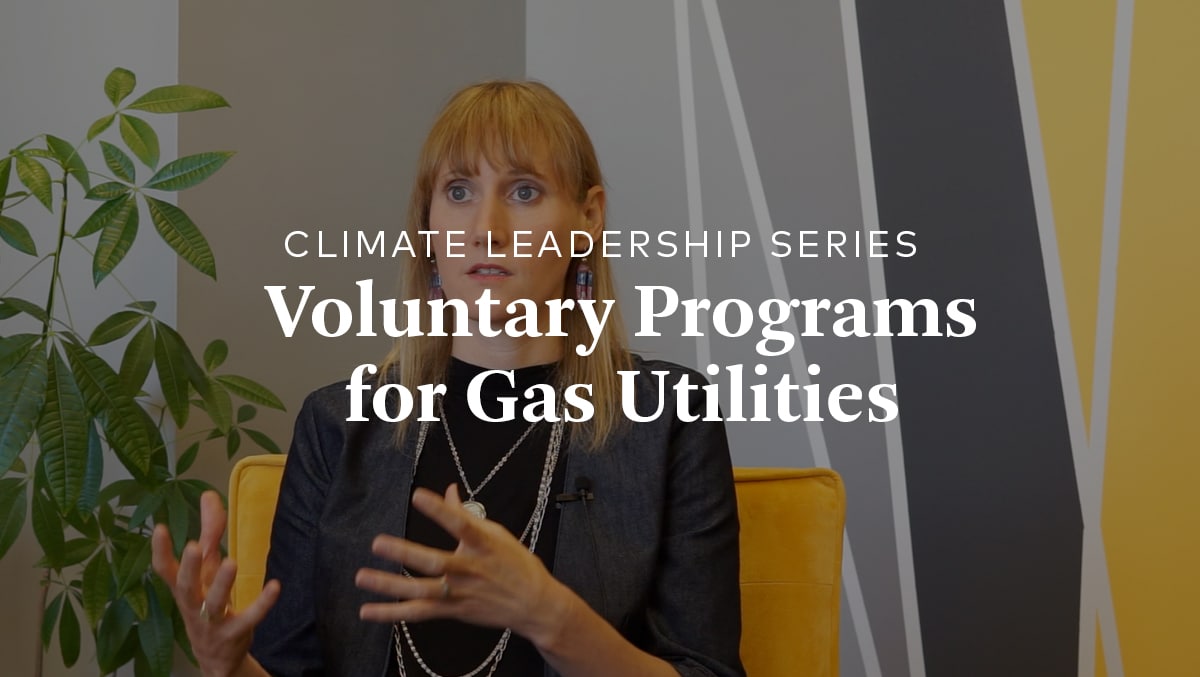
Amanda Mortlock, VP of 3Degrees’ Utility Partnerships, discusses the key components of climate strategies for gas utilities, including voluntary renewable natural gas (RNG) programs.

Amanda Mortlock, VP of 3Degrees’ Utility Partnerships, discusses the key components of climate strategies for gas utilities, including voluntary renewable natural gas (RNG) programs.

Electric utilities face significant pressures as well as many exciting opportunities — decarbonization, transportation electrification, continuing digital transformation, changing customer preferences, increasing disintermediation (just to name a few). Every day, utility teams work hard to solve these challenges, as well as capitalize on the opportunities that they present. But many utilities fail to realize there is an underutilized tool in their toolbox that could be very effective in these efforts: voluntary green power programs.
Having worked closely with utilities for over a decade, I can say with confidence that fully optimized green power programs provide a huge opportunity for utilities. When designed and implemented well, these programs offer numerous benefits.
Green power programs enable utilities to partner with their customers to achieve utility or regional carbon reduction targets.
These programs also provide the opportunity to achieve incremental revenue, whether from assets supported by the voluntary market or a regulatory-approved mark-up. While challenging to make happen, this is feasible and some utilities are already realizing these revenue gains.
Green tariffs have become absolutely essential in attracting most significant new corporate load.
As documented by J.D. Power research, when customers participate in a green power program – or are even just aware of it – customer satisfaction scores jump.
When most utilities envision the utility-of-the-future, they picture selling more than just electrons to customers. Green power programs allow utilities to start to build that muscle, and can even fund entire sales channels that can eventually be leveraged to support the sales of additional products.
Green power programs provide the perfect opportunity for utilities to embrace a comprehensive digital sales and marketing strategy (most are just scratching the surface right now). With a low barrier to entry, highly targeted reach, and a great storytelling platform, a full digital strategy can help utilities explore new ground when it comes to connecting with customers where they are.
While it may not be possible to realize every one of these benefits, a well-designed suite of programs should be able to deliver on most of them collectively. Even a legacy program can be optimized to deliver increasing value.
Frequently, utilities create individual green power programs that are reactive — designed to address a particular threat or to serve a specific client — which can make it difficult to scale the programs to reach their full potential. And without scale, most of the benefits listed above simply aren’t meaningful or even possible.
Instead, utilities need to start with a proactive program design where an entire suite of green power programs is designed as part of a clear, intentional piece of the organization’s broader strategy. Critical factors in program design include:
Green power programs are only successful if customers enroll. It’s essential to invest time in researching how your customers across different segments feel about critical elements of the program.
Based on this research, you’ll have a better sense of how your program needs to balance cost with impact. Customers want to have an impact with their purchase, but there is still a ceiling on the premium customers are willing to pay.
Working with environmental and rate-payer advocates early on in the program design process will help you understand what they value and, later, make it easier to secure their support. And engaging internal stakeholders is also critical to program success — if they understand the value the program delivers, they will be more likely to champion it throughout the organization.
Utilities need to be intentional about the value they want a suite of green power programs to deliver. For example, if program profit is critical, this needs to be built into the program rates at the beginning.
Green power programs are unlike other utility programs that often have fixed, regulatory mandated marketing budgets. In this case, the budget grows as the program grows — which is appropriate for a premium, subscription-based product. One of the most common mistakes utilities make is under-funding their marketing efforts in early years. Without investment, they can’t scale the program and ultimately deliver any of the benefits listed above in a meaningful way.
Green power programs sit at the intersection of decarbonization and customer satisfaction and thus provide a unique opportunity to utilities. By maximizing the value of these programs, utilities, their customers, and the climate all win.
Recent Comments